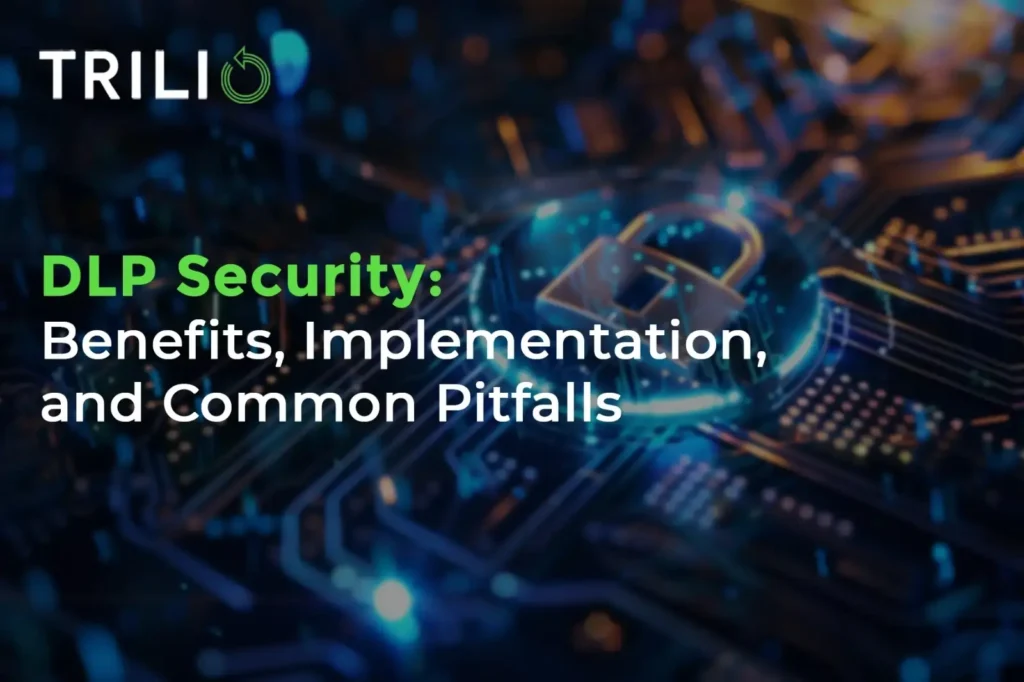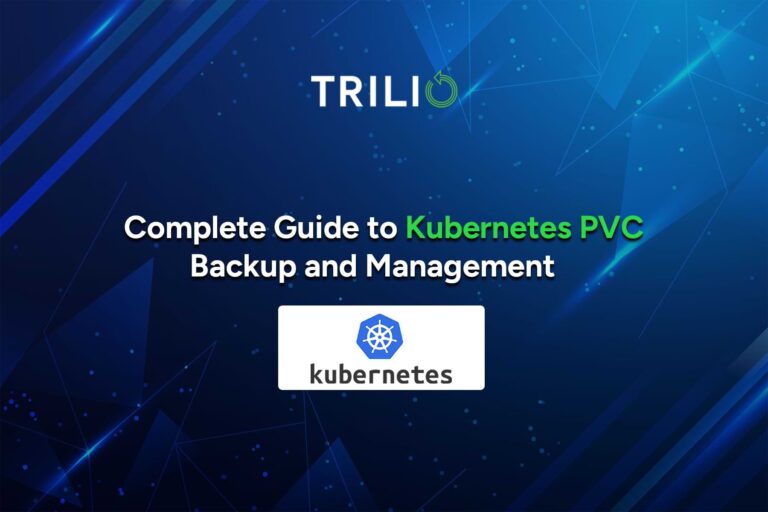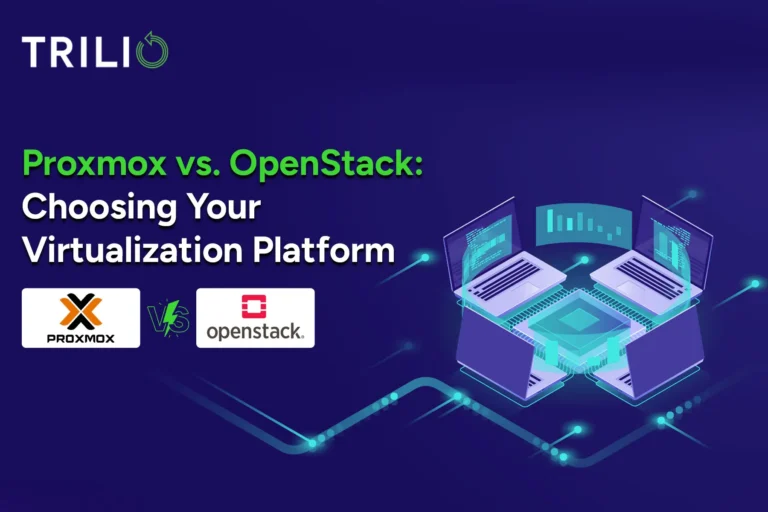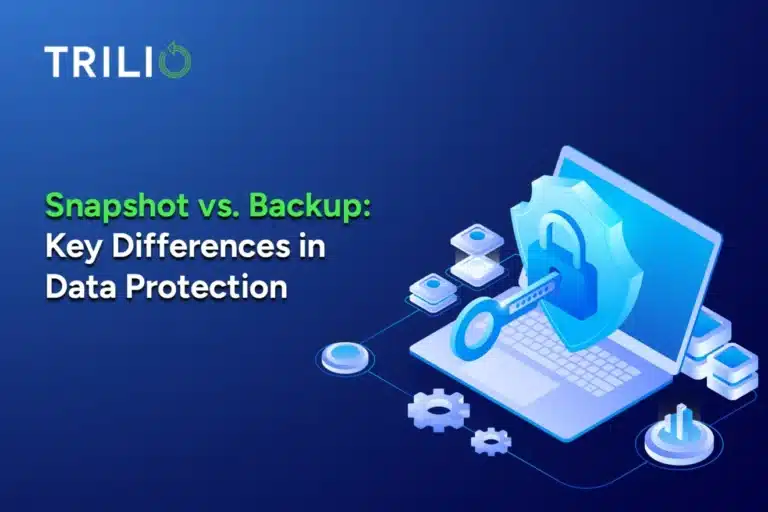Regardless of the industry, the risks associated with data loss are significant. Financial services, healthcare, government, technology, and many other fields – all rely heavily on sensitive data. The Identity Theft Resource Center (ITRC) reports that the number of data compromises in the United States hit a record high of 1,802 in 2022. This emphasizes the alarming increase in data security incidents. Data Loss Prevention (DLP) security provides a critical layer of protection of data that also helps ensure compliance with ever-stricter regulations, protect intellectual property, and maintain the trust of customers and stakeholders.
In this blog, we’ll dive into the key aspects of DLP security. We’ll explore its benefits, provide a step-by-step implementation guide, and discuss common pitfalls to avoid. Whether you’re in IT operations, a DevOps engineer, or a service provider, you’ll gain the insights necessary to deploy DLP strategies effectively within your organization.
Understanding DLP Security
Defining DLP
Data Loss Prevention (DLP) is a comprehensive set of technologies and strategies designed to detect and prevent unauthorized access, use, disclosure, or loss of sensitive data. It includes policies, procedures, and tools that monitor and protect data throughout its lifecycle, whether it’s at rest (stored), in motion (being transmitted), or in use (actively being accessed or modified).
Types of DLP Security:
- Data at Rest DLP: Protects data stored in databases, file shares, and cloud storage. DLP techniques include encryption, access controls, and activity monitoring to safeguard sensitive data even when it’s not actively being used.
- Data in Motion DLP: Focuses on safeguarding data while it’s being transmitted over networks, such as through email, websites, and file transfers. It employs methods like network scanning, content inspection, and encryption to prevent leaks during data transfer.
- Data in Use DLP: Concentrates on securing data while it’s being actively used on endpoint devices like laptops, desktops, and mobile phones. This includes preventing unauthorized actions like copying, printing, screen capturing, or transferring data to unapproved locations.
- Endpoint DLP: Provides a layer of DLP specifically tailored for endpoint devices, extending protection even when devices are offline or outside the corporate network. Endpoint DLP often includes features like file tracking, application whitelisting, and removable media controls.
Real-World Use Cases:
- Healthcare: Preventing the accidental or malicious disclosure of protected health information (PHI) to comply with HIPAA regulations. DLP solutions can identify sensitive patient data, restrict access, and monitor its usage to prevent unauthorized exposure.
- Financial Services: Safeguarding sensitive customer data and financial records to meet compliance with PCI DSS. DLP helps enforce secure data handling practices, encrypt data in transit and at rest, and detect potential breaches to protect cardholder information.
- Manufacturing: Protecting intellectual property like product designs, trade secrets, and proprietary formulas. DLP can classify and tag sensitive R&D documents, control access based on roles and needs, and monitor for any attempts to steal valuable intellectual property.
- Government: Maintaining the confidentiality of classified information and sensitive citizen data. DLP tools are used to prevent unauthorized access, enforce strict sharing policies, and track the movement of sensitive files to keep national security information protected.
Benefits of DLP Security
Regulatory Compliance
DLP security plays a crucial role in aligning your organization with industry and government regulations like HIPAA, GDPR, CCPA, and PCI DSS. It facilitates compliance through:
- Data Discovery and Classification: DLP solutions automate the identification and tagging of regulated data, using customizable policies and built-in classifiers to streamline the process.
- Granular Access Controls: DLP allows enforcing role-based and need-to-know principles, restricting access to sensitive data based on user roles and responsibilities.
- Activity Monitoring and Reporting: Comprehensive logging of data usage provides crucial evidence for compliance audits, incident investigations, and overall due diligence.
Intellectual Property Protection
DLP is a core defense for safeguarding your organization’s intellectual property. Trade secrets, product designs, research data, and other sensitive information are the lifelines of innovation, and DLP helps ensure they remain secure under your control. DLP tools go beyond simply identifying sensitive data, they analyze how it’s used, detecting anomalies in access patterns. By establishing baselines of normal data activity, DLP can flag deviations that might indicate unauthorized attempts to access or steal sensitive intellectual property.
Enhanced Brand Reputation
Data breaches decrease trust in your brand – both financially and reputationally. By implementing DLP security, you demonstrate a commitment to data security and increase trust among customers, partners, and stakeholders. DLP’s focus on prevention goes a long way in minimizing the chance of damaging security-related incidents.
Request a demo to learn how Trilio’s solutions can protect your brand and sensitive data.
DLP isn’t a standalone solution, it’s a vital component of a robust cybersecurity ecosystem. Here’s how it improves your security:
- Visibility into Data Flows: DLP tools map where sensitive data resides, how it travels through your networks, and who interacts with it, providing critical insights into potential vulnerabilities.
- Integration with Security Tools: DLP integrates with other security tools like firewalls, intrusion detection/prevention systems (IDS/IPS), security information and event management (SIEM) platforms, creating a centralized view and more comprehensive response to security threats.
Implementing DLP Security: A Step-by-Step Guide
1. Data Discovery and Classification
The foundation of effective DLP is knowing what data needs protection and where it’s located. Conduct a thorough audit to understand the types of sensitive data your organization possesses and its flow across systems. This involves scanning various data repositories, including file shares, databases, cloud storage platforms (e.g., AWS S3, Azure Storage, Google Cloud Storage), and endpoints like laptops, desktops, and mobile devices. Use automated discovery tools with built-in and customizable classifiers based on keywords, file patterns, and metadata.
Develop a clear data classification scheme (e.g., Confidential, Restricted, Public) based on your organizational needs and regulatory requirements. Classify data with increasing degrees of sensitivity, ensuring alignment with regulations like HIPAA, GDPR, DORA etc. Consider integrating data classification labels with metadata tags to enable automated protection.
2. Policy Creation
Define granular data handling policies aligned with your classification system and compliance obligations. These policies will dictate how sensitive data interacts with users, systems, and networks. Create detailed rules governing access controls by utilizing role-based access control (RBAC) principles and “need-to-know” restrictions. Implement tools like identity and access management (IAM) solutions and encryption with robust key management to enforce secure access.
Specify allowed actions for different data classes (e.g., view-only permissions for some, full edit for others). Consider technologies like digital rights management (DRM) to enforce restrictions down to individual files. Clearly define where sensitive data can and cannot reside (approved locations, devices, cloud services). Consider geo-fencing policies if compliance requires that specific data remain within specific regions.
Mandate encryption both at rest (via disk encryption, database encryption) and in transit (using protocols like TLS/SSL) for data protection. Outline specific requirements for data masking and tokenization when sensitive data must be used in less secure environments (e.g., for testing).
3. Choosing a DLP Solution
Evaluate DLP vendors and select a solution that aligns with your technical requirements, budget, and the types of data you aim to protect. Prioritize the following technical considerations:
- Coverage for data at rest, in motion, and in use to ensure the solution addresses all relevant data states across on-premises and cloud environments.
- Endpoint DLP capabilities to assess the solution’s features for granular control over endpoint data use, such as blocking USB transfers, controlling printing, and restricting uploads to unapproved platforms.
- Integration with existing security infrastructure by selecting a solution with APIs and connectors for seamless integration with your firewalls, intrusion detection/prevention systems (IDS/IPS), security information and event management (SIEM) solutions, and cloud security tools.
- Cloud data protection to verify the solution’s ability to extend DLP policies into cloud workloads, SaaS applications, and cloud-native storage.
- Ease of deployment and management by opting for a solution with a user-friendly management interface, customizable policy templates, intuitive reporting capabilities, and the potential to scale with your evolving needs.
Request a demo to learn how Trilio can improve your DLP security.
4. Deployment and Integration
Plan a phased rollout of your DLP solution. Begin with pilot deployments in targeted departments, focusing either on less critical datasets or specific high-risk use cases. This approach allows you to refine policy configurations, troubleshoot potential integration conflicts with existing infrastructure, and gather user feedback iteratively before a full-scale deployment. To maximize protection, integrate your DLP solution with complementary security tools like firewalls, IDS/IPS systems, and SIEM platforms. Firewalls can provide network-level enforcement of DLP policies, such as blocking file transfers based on classification tags. IDS/IPS systems can detect anomalous behavior patterns that might signal attempted data exfiltration. A SIEM solution offers a centralized view of security events, correlating DLP alerts with other indicators for faster incident analysis and a more informed response.
5. Monitoring and Incident Response
Establish procedures for monitoring DLP alerts and investigating potential security incidents. Define clear workflows for how alerts generated by your DLP solution will be prioritized, assigned to security personnel, and resolved as necessary. Ensure your incident response team is well-versed in DLP-specific investigations.
Develop an incident response plan that includes data breach notification processes as mandated by regulations. Detail the steps for assessing the severity of a breach, determining if and when notification to regulatory bodies or affected individuals is required, and documenting the investigation process thoroughly for audit purposes.
6. Ongoing Education and Refinement
Educate all employees on DLP policies, the importance of data security, and best practices for data handling. DLP is only as effective as the people who follow its guidelines. Provide regular security awareness training that emphasizes the risks of data misuse, scenarios of how breaches can occur, and the importance of complying with DLP policies. Make training engaging through the use of real-world examples and interactive elements.
Regularly evaluate and update your DLP policies, classifications, and technology as business needs and the threat landscape evolve. DLP is an ongoing process, not a one-time project. As your data footprint changes, ensure your data classification scheme remains accurate. Review your policies to adapt to new workflows, evolving compliance mandates, and novel cyber threats. Periodically assess your chosen DLP solution’s effectiveness and make adjustments or upgrades if needed to ensure ongoing protection.
Important Note: Implementing DLP can be complex. It’s recommended to consult with experts to ensure a smooth, effective deployment that aligns with your specific requirements.
In the next section, we’ll discuss some common pitfalls to watch out for when implementing and using DLP.
Common DLP Security Pitfalls & How to Avoid Them
Overly Broad Policies
Overly strict policies can have severe repercussions. Locking down data too tightly can decrease productivity, harm legitimate work processes, and potentially lead users to try and circumvent these restrictions. To avoid this, find a balance between security and usability. Start with the most sensitive data and apply the strictest rules, then gradually decrease controls as the level of data sensitivity decreases. Involve stakeholders from various departments during the policy creation process to ensure policies support everyday business operations.
Neglecting Data in Motion
Focusing solely on data at rest presents a significant risk. Vulnerabilities exist while data is being transmitted across networks, such as through email, instant messaging, or web uploads. Implement network-based DLP solutions that analyze traffic, identify sensitive data, and enforce policies on data movement. Taking it a step further, integrating DMARC policy options helps authenticate emails and prevent spoofing, adding another layer of protection during data transmission.
Ignoring Shadow IT
The rise of cloud-based applications (SaaS) and services outside of sanctioned IT channels creates blind spots in your DLP strategy. Employees may use unapproved file-sharing tools, collaboration platforms, or email services to handle data, bypassing your established security controls. Use discovery tools designed to detect the usage of shadow IT within your organization. Educate employees on the risks associated with unauthorized platforms and the importance of using approved applications. Extend DLP controls to sanctioned cloud platforms, ensuring consistent monitoring and security, regardless of where data is stored or accessed.
Lack of User Training
Effective DLP relies heavily on users understanding how to identify sensitive data, the importance of following policies, and the risks posed by improper data handling. Conduct regular and engaging training sessions focused on DLP security. This should include real-world scenarios and examples to emphasize the importance of data security. Make DLP policies easily accessible and encourage employees to ask questions if anything is unclear.
Underestimating Maintenance
DLP is not a one-time project but an ongoing process. As your data changes, new threats emerge, and regulations evolve, your DLP policies and solutions must adapt along with them. Regularly review and update your data classification schemes and policies. Schedule periodic assessments of your DLP solution’s effectiveness. Stay up-to-date on evolving cyber threats and adjust your DLP strategies accordingly.
Maximizing Benefits for Different Teams
DevOps
Balancing security with agility is crucial in DevOps environments where continuous integration and delivery (CI/CD) pipelines demand fast-paced innovation. Integrate DLP seamlessly into CI/CD processes to identify potential data leaks early in the development lifecycle. Emphasize solutions that minimize development disruptions and promote security as a shared responsibility between DevOps teams and security personnel.
IT Operations Professionals
For IT operations professionals, streamlining DLP management and incident response procedures is vital. Prioritize DLP solutions that offer centralized visibility, easy-to-use dashboards, and automated reporting capabilities. Integration with existing ticketing systems and incident response workflows will make DLP implementation smoother and incident response more efficient.
Service Providers
DLP can be a significant value-added service for managed service providers (MSPs) and cloud service providers (CSPs). Offering DLP as part of your security solutions allows you to demonstrate a commitment to data protection and help your clients meet their compliance requirements. Select DLP platforms that are designed for multi-tenancy and can seamlessly scale to accommodate the needs of diverse clients.
Conclusion
Due to data breaches being a constant threat and regulations becoming increasingly stringent, DLP security has become a vital layer of protection. A strategic DLP implementation is required for safeguarding sensitive information, maintaining compliance, and preserving brand reputation.
While choosing the right DLP solution, ensure it aligns seamlessly with your existing infrastructure, addresses your unique security needs, and offers the flexibility to evolve with your organization. At Trilio, we understand that effective data protection strategies go beyond traditional backup and disaster recovery solutions. Our products are designed with data protection as a core focus, providing the tools to help you discover, classify, and secure your most valuable assets.
Schedule a demo to learn how Trilio can enhance your DLP security and improve overall data protection.
FAQs
My organization is small and doesn't handle the type of highly regulated data mentioned (like healthcare records or financial information). Do we still need DLP security?
Yes, DLP security is relevant for organizations of all sizes and industries. While compliance regulations might be the primary driver for some, every company possesses sensitive information that needs protection. This could include employee data, customer lists, business plans, proprietary formulas, or any data that, if compromised, could damage your reputation or competitive advantage. DLP helps safeguard these valuable assets.
Implementing DLP sounds complex and potentially disruptive. How can I make the transition smoother?
A phased approach is crucial for successful DLP implementation. Start with a pilot program focusing on a specific department or a less critical data set. This allows you to refine policies, identify potential issues, and gather user feedback before expanding to a full-scale deployment. Additionally, look for DLP solutions that offer user-friendly interfaces, customizable policy templates, and easy integration with your existing security tools to ease the transition.
How does DLP security fit into our broader cybersecurity strategy?
DLP security is a vital component of your overall cybersecurity posture. Integrate your DLP solution with firewalls, intrusion detection/prevention systems (IDS/IPS), and SIEM solutions. Centralized monitoring and correlated analysis of events from multiple security tools offer a more comprehensive view of potential threats and allow for a faster, more informed incident response.




